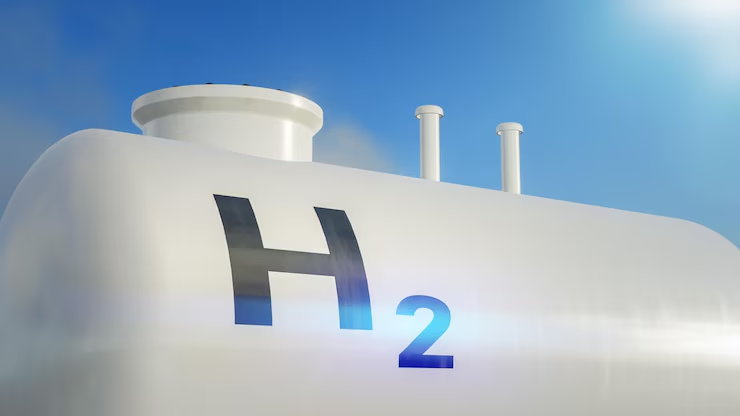In the world of organic chemistry, compounds like HCOOCH2H2O offer an exciting glimpse into molecular interactions and their practical applications. Understanding the structure of HCOOCH2H2O is essential for anyone studying chemistry, as it sheds light on key concepts like molecular bonds, functional groups, and the behavior of molecules in different environments. In this article, we will delve into the chemical structure of HCOOCH2H2O, explore its molecular composition, and examine its potential applications.
What is HCOOCH2H2O?
HCOOCH2H2O is a chemical compound that consists of several functional groups and atoms. To fully understand this compound, it’s crucial to break it down into its molecular components and explore each part individually. The structure consists of:
-
HCOO: This part of the compound is the formate group, an ester formed from the reaction of formic acid and alcohol.
-
CH2: This represents a methylene group, a simple organic group consisting of one carbon atom bonded to two hydrogen atoms.
-
H2O: Water, which is typically involved in hydration reactions or might be present due to the compound’s synthesis process.
Now, let’s look at these components in detail and see how they come together to form HCOOCH2H2O.
Molecular Structure of HCOOCH2H2O
Understanding the Formate Group (HCOO)
The formate group (HCOO) consists of a carbonyl group (C=O) bonded to a hydroxymethyl group (CH2OH). The carbonyl group is important because it introduces polarity to the molecule, enabling it to engage in hydrogen bonding and other molecular interactions. This makes formate groups highly reactive and significant in various chemical reactions, especially in the formation of esters.
The Role of Methylene (CH2)
The methylene group (CH2) plays a pivotal role in linking the formate group to water molecules. Methylene groups are often used as spacers in organic molecules because of their relatively simple structure. By attaching the formate group to the methylene group, HCOOCH2H2O gains flexibility, allowing the molecule to participate in various chemical reactions that form more complex compounds.
Water’s Contribution to HCOOCH2H2O
The final component of the molecule is water (H2O), which is integral to the compound’s overall structure and reactivity. Water molecules often act as solvents or reaction partners in chemical processes, and in this case, water plays a role in the molecule’s overall stability and reactivity.
How HCOOCH2H2O is Formed
HCOOCH2H2O can be synthesized through a variety of methods, depending on the desired application and the availability of reactants. One common method involves esterification, where formic acid reacts with an alcohol in the presence of water. This reaction can be controlled to ensure that the product contains the precise structure of HCOOCH2H2O.
Esterification Process
In the esterification process, the hydroxyl group of an alcohol (CH2OH) reacts with the carboxyl group of formic acid (HCOOH), releasing water in the process. The result is an ester compound—HCOOCH2H2O. This process is central to the production of esters in both laboratory and industrial settings.
Chemical Properties of HCOOCH2H2O
Understanding the chemical properties of HCOOCH2H2O is essential for exploring its potential uses in various chemical reactions. Key properties include:
-
Polarity: The polar nature of the formate group makes HCOOCH2H2O a versatile molecule in various applications, including solubility in water and interactions with other polar compounds.
-
Reactivity: The ester group in HCOOCH2H2O is highly reactive, especially in the presence of catalysts or under specific conditions like heat or pressure.
-
Hydrogen Bonding: The hydroxyl group in the formate and the water molecule allows HCOOCH2H2O to engage in hydrogen bonding, affecting its solubility and reactivity.
Applications of HCOOCH2H2O in Industry
HCOOCH2H2O has several practical applications, particularly in organic synthesis, where its properties as an ester make it useful in creating other compounds. Some notable applications include:
In Organic Synthesis
In organic chemistry, HCOOCH2H2O can be used as a reagent in esterification reactions or as a solvent in chemical processes. The compound’s reactivity and polarity allow it to serve as an intermediate in the production of various chemicals, such as pharmaceuticals, fragrances, and plastics.
As a Solvent in Reactions
Due to its polarity, HCOOCH2H2O can act as an excellent solvent in certain chemical reactions. Its ability to dissolve both polar and nonpolar compounds makes it an essential tool in laboratories where precise solvent selection is crucial for achieving desired reaction outcomes.
In Analytical Chemistry
In analytical chemistry, HCOOCH2H2O can be used in titration processes or as a sample for studying reaction kinetics. Its relatively simple structure allows for easy manipulation and examination during chemical experiments.
Benefits and Challenges of Working with HCOOCH2H2O
Benefits
-
Versatility: HCOOCH2H2O’s molecular structure allows it to be used in various reactions, making it a versatile compound in both research and industrial settings.
-
Hydrogen Bonding: The ability of HCOOCH2H2O to form hydrogen bonds enhances its solubility and interaction with other compounds, making it an ideal candidate for chemical synthesis and laboratory experiments.
Challenges
-
Instability in Extreme Conditions: Like many organic compounds, HCOOCH2H2O can be unstable under extreme conditions, such as high temperatures or in the presence of strong acids or bases.
-
Reactivity: The compound’s high reactivity, while beneficial in some scenarios, can pose challenges in controlling reactions and ensuring safety during its synthesis and use.
Conclusion
Understanding the chemical structure of HCOOCH2H2O provides insight into its versatility and wide range of applications in chemistry and industry. The formate group, methylene group, and water molecule each contribute to the compound’s overall properties, making it an essential molecule in organic synthesis, chemical reactions, and laboratory analysis. Despite its potential, the reactivity of HCOOCH2H2O requires careful handling, especially under extreme conditions. As we continue to explore its properties and applications, HCOOCH2H2O will undoubtedly remain a key player in various scientific fields.



